Asu Sengi
Asu Sengi
Candi Asu, Candi Asu Sengi, Asu Temple, is part of the Sengi complex built in the 8th and 9th centuries. It is a Hindu temple lying in Magelang Regency, Central Java Province. It is nestled in between Mount Merapi and Mount Merbabu volcanoes and near the road from Mungkid to Boyolali.
An external wall is formed as the base with an internal wall acting as the foundation. Between the two walls, the area has been filled with two meters of rocks and earth, then paved on the top. The remaining space was left for a center statue to be placed. On the western outside wall, a masonry mass was left, forming the stairs.
From this rough layout, new lines were drawn in the paving in order to expand and build the temple properly. Angular rocks were used as the original blocks, set at an angle. The temple was nearing completion and larger rocks were to be placed last. Carving began from the top of the temple, working downward. The large finishing rocks that were to be used at the end were never carved or used, offering an explanation to their disappearance from the site.
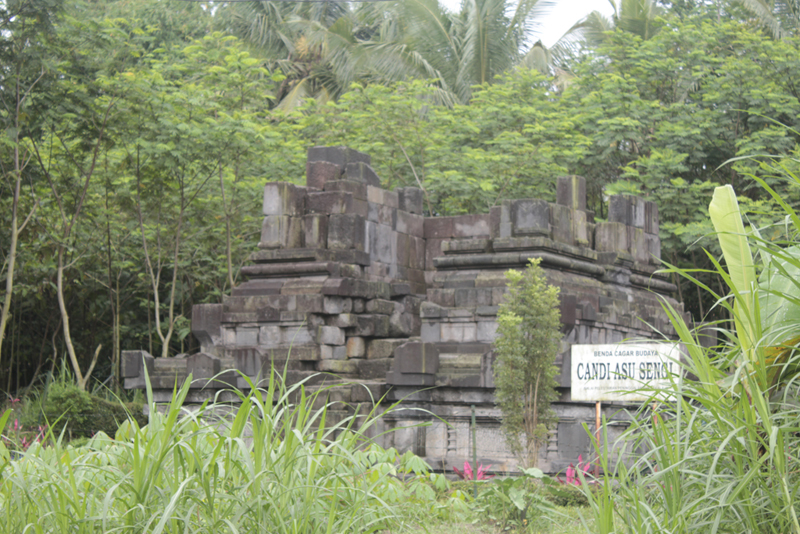 Asu Temple is the name of a Hindu cultural heritage temple located in Sengi Village, Shaman District, Magelang Regency, Central Java Province. The name of the temple was given by the local community because the Nandi ox statue in the temple complex resembles a dog.
The outer wall of the Asu temple was formed as a base with the inner wall serving as the foundation. Between the two walls, the area has been filled with two meters of rocks and soil, then paved over it. The remaining space is left for the middle statue to be placed. On the outer western wall, rock remains, forming a staircase.
Asu Temple is the name of a Hindu cultural heritage temple located in Sengi Village, Shaman District, Magelang Regency, Central Java Province. The name of the temple was given by the local community because the Nandi ox statue in the temple complex resembles a dog.
The outer wall of the Asu temple was formed as a base with the inner wall serving as the foundation. Between the two walls, the area has been filled with two meters of rocks and soil, then paved over it. The remaining space is left for the middle statue to be placed. On the outer western wall, rock remains, forming a staircase.
 Location
This temple is located on the slopes of Mount Merapi near the confluence of the Pabelan and Telingsing Rivers, approximately 10 km northeast of Ngawen Temple. There are also two other Hindu temples nearby, namely Pendem Temple and Lumbung Temple.
Architecture
Asu Temple faces west. This temple has a square plan with a side length of 7.94 meters. The height of the foot of the temple is 2.5 meters, the height of the body of the temple is 3.35 meters. The height of the roof of the temple is unknown because it has collapsed and most of the stones are missing. With this size, this temple is a small temple.
Near Asu Temple, two stone inscriptions in the form of a monument (lingga) have been found, namely the Sri Manggala I (874 AD) and Sri Manggala II (874 AD) inscriptions.
Location
This temple is located on the slopes of Mount Merapi near the confluence of the Pabelan and Telingsing Rivers, approximately 10 km northeast of Ngawen Temple. There are also two other Hindu temples nearby, namely Pendem Temple and Lumbung Temple.
Architecture
Asu Temple faces west. This temple has a square plan with a side length of 7.94 meters. The height of the foot of the temple is 2.5 meters, the height of the body of the temple is 3.35 meters. The height of the roof of the temple is unknown because it has collapsed and most of the stones are missing. With this size, this temple is a small temple.
Near Asu Temple, two stone inscriptions in the form of a monument (lingga) have been found, namely the Sri Manggala I (874 AD) and Sri Manggala II (874 AD) inscriptions.



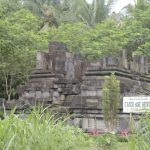
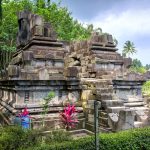

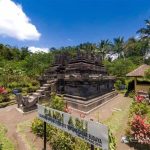
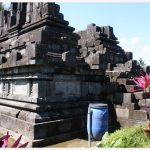

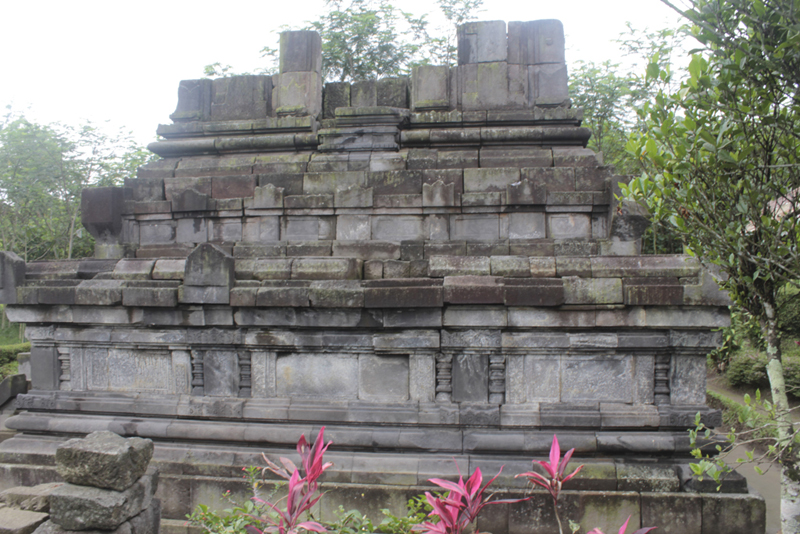 Asu Sengi Temple is located in Candi Pos Hamlet, Sengi Village, Shaman District, Magelang Regency. At Coordinates: 7°32′00″S 110°21′00″E or about 25 Km from Borobudur Temple to the northeast. This temple is a relic of the ancient Mataram kingdom from the Sanjaya dynasty (Mataram Hindu). This temple is located on the western slopes of Mount Merapi on the banks of the Tlingsing Pabelan River.
The name of the Asu Sengi temple is from the name ASU, which was actually just given by the local community when this temple was first discovered. The real name is actually not known for certain. The name Asu Temple was given because when it was first found there was a statue of Lembu Nandhi whose shape had been damaged and more like Asu [Dog-in Javanese], and Sengi was the name of the village where the temple was located, so the locals called it Asu Sengi Temple.
Asu Sengi Temple is located in Candi Pos Hamlet, Sengi Village, Shaman District, Magelang Regency. At Coordinates: 7°32′00″S 110°21′00″E or about 25 Km from Borobudur Temple to the northeast. This temple is a relic of the ancient Mataram kingdom from the Sanjaya dynasty (Mataram Hindu). This temple is located on the western slopes of Mount Merapi on the banks of the Tlingsing Pabelan River.
The name of the Asu Sengi temple is from the name ASU, which was actually just given by the local community when this temple was first discovered. The real name is actually not known for certain. The name Asu Temple was given because when it was first found there was a statue of Lembu Nandhi whose shape had been damaged and more like Asu [Dog-in Javanese], and Sengi was the name of the village where the temple was located, so the locals called it Asu Sengi Temple.
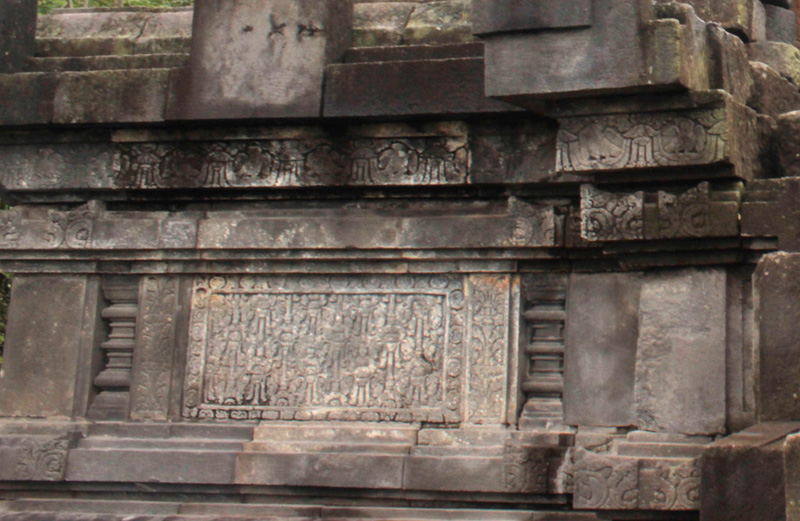 The body of the temple has decorative reliefs of flora on the four sides of the temple walls and there are reliefs of Kinara-Kinari (birds) as decorative pleats that surround the walls of the temple. In fact, many of these Kinara-Kinari reliefs are engraved on other ancient Mataram temples in Central Java Province, such as on Plaosan, Ratu Boko, and Ijo temples.
Asu Sengi Temple is a single piece temple with a missing part of the roof standing facing west, in the shape of a square measuring 7.94 meters by 7.94 meters. The height of the foot of the temple is 2.5 meters, the height of the body of the temple is 3.35 meters. The actual height of the temple is not known for certain because part of the roof of the temple has been lost.
The body of the temple has decorative reliefs of flora on the four sides of the temple walls and there are reliefs of Kinara-Kinari (birds) as decorative pleats that surround the walls of the temple. In fact, many of these Kinara-Kinari reliefs are engraved on other ancient Mataram temples in Central Java Province, such as on Plaosan, Ratu Boko, and Ijo temples.
Asu Sengi Temple is a single piece temple with a missing part of the roof standing facing west, in the shape of a square measuring 7.94 meters by 7.94 meters. The height of the foot of the temple is 2.5 meters, the height of the body of the temple is 3.35 meters. The actual height of the temple is not known for certain because part of the roof of the temple has been lost.
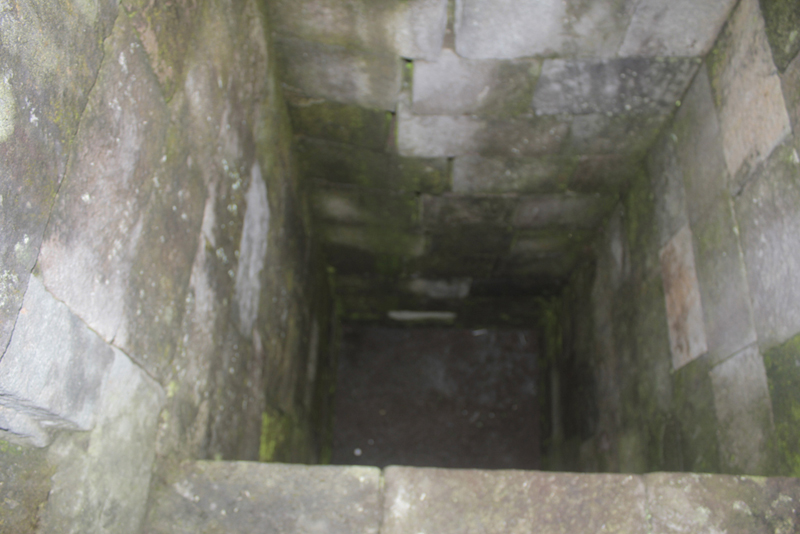 Even though the roof of the temple is now gone, it should be suspected that the roof of the temple is in the shape of a dome. This can be seen from the pieces of stone which, when shaped, will resemble a dome. On the inside of the temple there is a statue of a cow or nandhi, there is also a box-shaped well that reaches 3 meters in depth and measures 1.3 meters by 1.3 meters wide. The function of the well is not known with certainty, although on the wall of the well, the traces of the water discharge level are still clearly visible.
From several inscriptions found around the temple, one can identify the inscriptions of Sri Manggala I (number of 874 AD) and Sri Manggala II (number of 876 AD) and the Kurambitan inscription, from the records on these inscriptions it can be estimated that this temple was built around 869 AD (when Rakai Kayuwangi of the Sanjaya dynasty was in power). The inscriptions also state that Asu Sengi Temple is a sacred place for worship, both for ancestral spirits and for the spirits of kings and gods.
Even though the roof of the temple is now gone, it should be suspected that the roof of the temple is in the shape of a dome. This can be seen from the pieces of stone which, when shaped, will resemble a dome. On the inside of the temple there is a statue of a cow or nandhi, there is also a box-shaped well that reaches 3 meters in depth and measures 1.3 meters by 1.3 meters wide. The function of the well is not known with certainty, although on the wall of the well, the traces of the water discharge level are still clearly visible.
From several inscriptions found around the temple, one can identify the inscriptions of Sri Manggala I (number of 874 AD) and Sri Manggala II (number of 876 AD) and the Kurambitan inscription, from the records on these inscriptions it can be estimated that this temple was built around 869 AD (when Rakai Kayuwangi of the Sanjaya dynasty was in power). The inscriptions also state that Asu Sengi Temple is a sacred place for worship, both for ancestral spirits and for the spirits of kings and gods. (m2) Area
0
(m) Height
0
